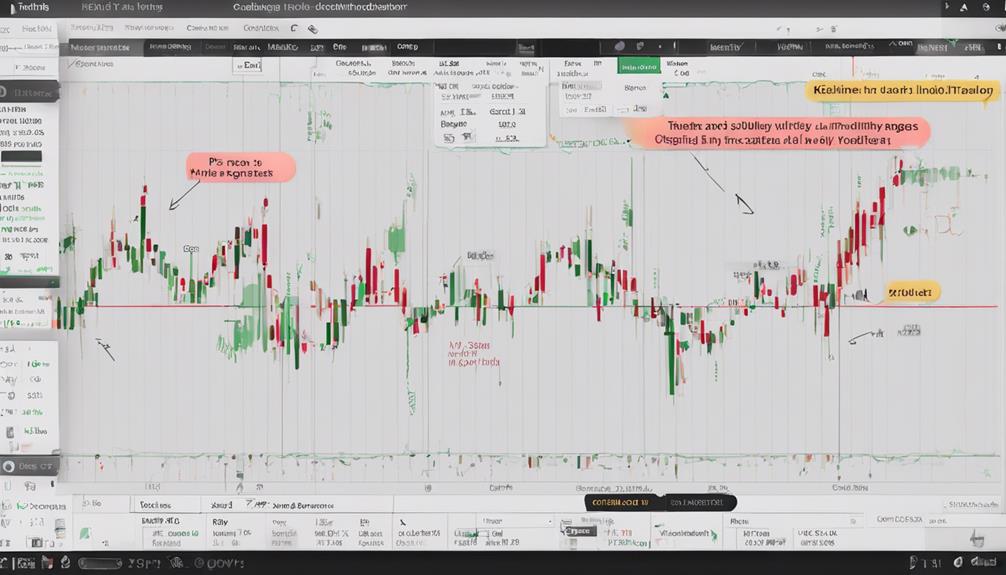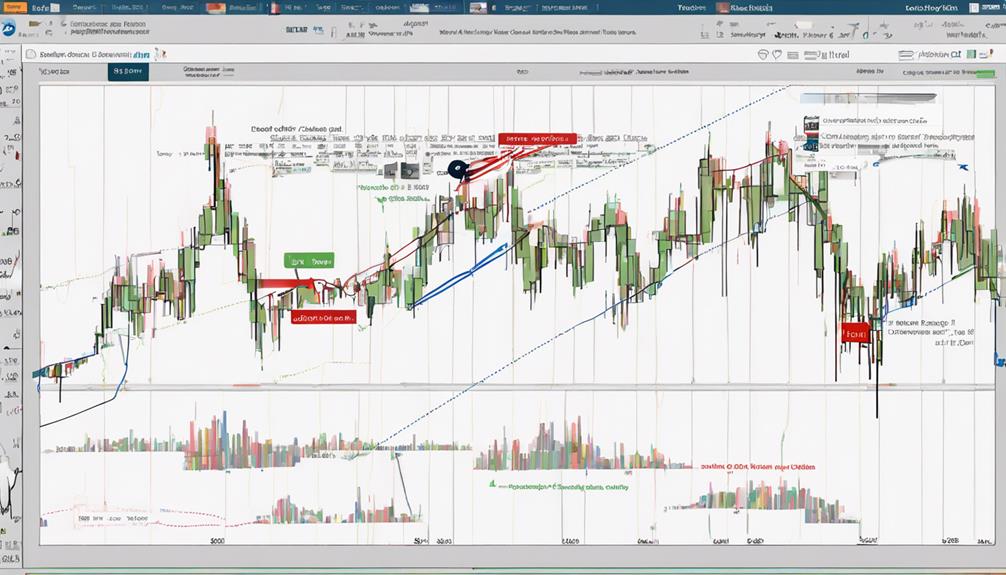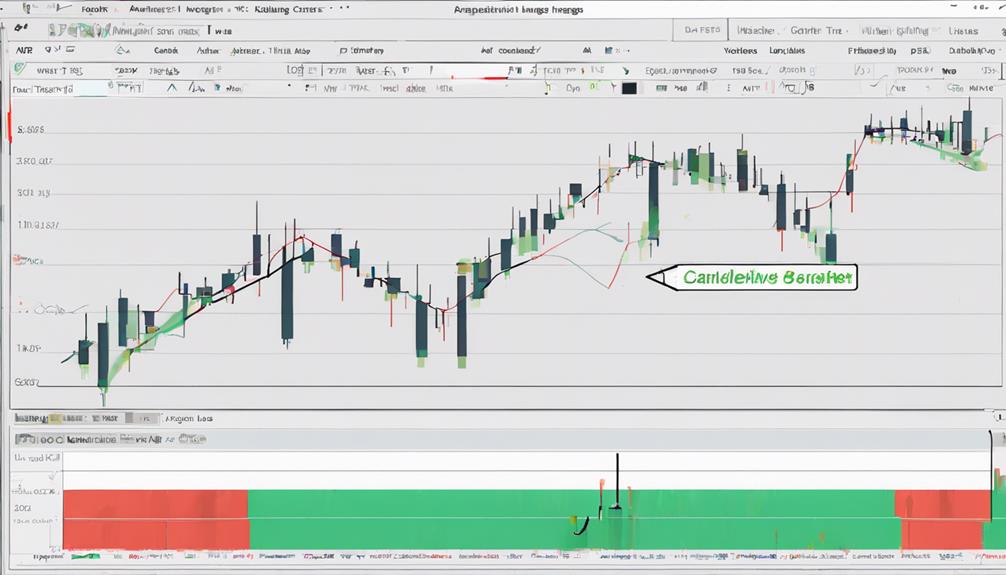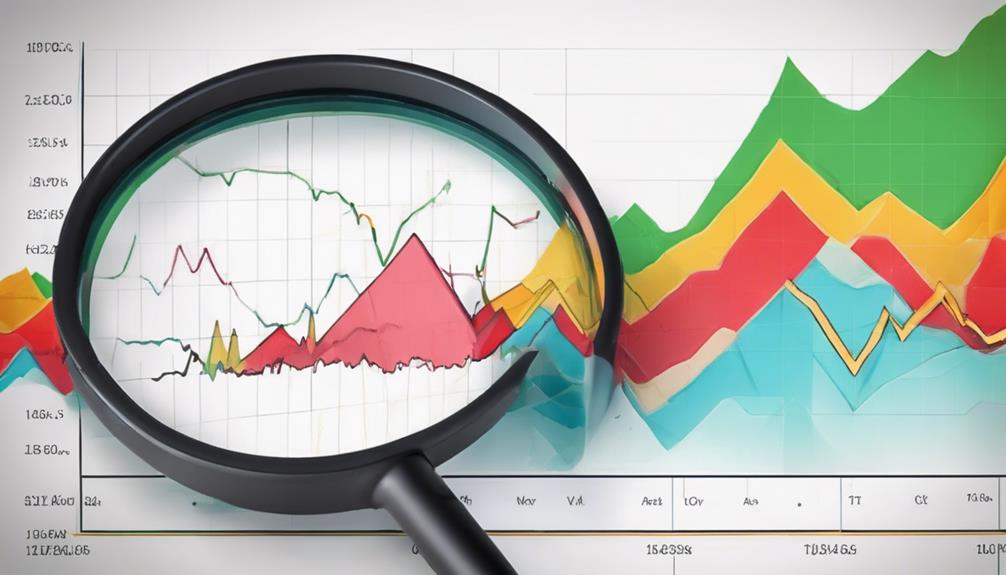Understanding how to interpret and leverage volatility indicators in day trading can significantly impact one's success in navigating the dynamic financial markets.
By honing in on specific indicators like Bollinger Bands, ATR, VIX, Keltner Channels, and Donchian Channels, traders gain a deeper understanding of market trends and potential price movements.
However, mastering these indicators requires more than just surface-level knowledge; it demands a strategic approach and a keen eye for detail.
Unveiling the intricacies of these indicators can unlock a world of opportunities for traders looking to enhance their decision-making processes and capitalize on market volatility.
Understanding Bollinger Bands
In the realm of technical analysis, a foundational tool for assessing price dynamics and potential market turning points is the comprehension of Bollinger Bands. These bands, consisting of a middle Simple Moving Average (SMA) line flanked by an upper band (SMA + 2 standard deviations) and a lower band (SMA – 2 standard deviations), serve as a key indicator of price volatility.
As prices fluctuate, the bands expand and contract accordingly, with wider bands indicating higher volatility levels and narrower bands suggesting lower volatility. Traders utilize Bollinger Bands to identify potential price breakouts, reversals, and overbought/oversold conditions in the market.
When prices touch or surpass the upper band, it may signal overbought conditions, whereas touching or dropping below the lower band may indicate oversold conditions. By understanding how Bollinger Bands interact with price movements, traders can make informed decisions, especially when combined with other indicators to confirm signals and enhance their trading strategies.
Mastering Keltner Channel

Efficiently utilized by day traders seeking to gauge price volatility and potential trend reversals, the Keltner Channels are composed of an Exponential Moving Average (EMA) line accompanied by two bands derived from Average True Range (ATR) calculations.
The upper band of the Keltner Channels indicates potential resistance levels, while the lower band suggests possible support levels. Traders rely on these channels to identify trend reversals and breakouts based on price movements.
One of the key advantages of Keltner Channels is their dynamic nature, adjusting to market volatility to provide valuable insights for day traders. Understanding how Keltner Channels interact with price action is crucial for traders to make informed decisions on entry and exit points.
Utilizing Donchian Channel Effectively

Utilized by traders to track price breakouts and identify trends, the Donchian Channel, developed by Richard Donchian, consists of upper and lower bands showcasing the highest high and lowest low prices over a specific period.
Traders utilize the Donchian Channel to determine potential entry and exit points by observing price movements. Breakouts above the upper band signal bullish trends, indicating a potential opportunity to enter a long position. Conversely, breakouts below the lower band suggest bearish trends, prompting traders to consider short positions.
The Donchian Channel enables traders to capture significant price movements and adjust their trading strategies accordingly. By incorporating the upper and lower bands as dynamic support and resistance levels, traders can develop more informed trading strategies.
It is essential for traders to continuously monitor the Donchian Channel to adapt to evolving market conditions and optimize their trading decisions effectively. Adjusting trading strategies based on the signals provided by the Donchian Channel can enhance trading performance and increase the probability of successful trades.
Harnessing Average True Range (ATR)

Harnessing the Average True Range (ATR) provides traders with a reliable measure of stock volatility over a specific period. Utilizing ATR effectively can significantly enhance a trader's ability to manage risk and make informed decisions. Here are some key points to consider when harnessing Average True Range (ATR):
- Measure of Volatility: ATR quantifies the average price range of a stock, reflecting its volatility levels accurately.
- Setting Stop-Loss Levels: By analyzing ATR values, traders can determine appropriate stop-loss levels based on the stock's price movement volatility.
- Influencing Position Sizing: Higher ATR values indicate increased volatility, impacting position sizing decisions to manage risk effectively.
- Adapting to Market Conditions: ATR enables traders to adjust their strategies in response to changing market conditions and volatility levels.
Exploring India VIX for Insight

India VIX, known as the fear gauge, serves as a pivotal instrument for evaluating market volatility and investor sentiment within the Indian stock market. Calculated from NIFTY index options, India VIX reflects market participants' expectations of volatility over the next 30 days. Values exceeding 20 indicate high volatility and potential market uncertainty, while values below 15 suggest low volatility and stable market conditions.
Day traders utilize India VIX to anticipate market movements, adjust risk management strategies, and assess overall market sentiment. Understanding India VIX is crucial for making informed decisions, especially in the volatile conditions prevalent in the Indian stock market.
What Are Some Effective Volatility Indicators for Day Trading?
When it comes to day trading, having effective volatility indicators is crucial for enhancing trade performance. Some commonly used volatility indicators include the Average True Range (ATR), Bollinger Bands, and the Volatility Index (VIX). These indicators can help traders identify potential price movements and make informed trading decisions.
Frequently Asked Questions
What Is the Best Indicator to Detect Volatility?
The best indicator to detect volatility in day trading is the Bollinger Bands. By tracking price movements relative to moving averages and utilizing standard deviation to expand during high volatility periods, it provides insights into potential price breakouts or reversals.
What Is the Most Effective Indicators for Day Trading?
Utilizing a combination of Bollinger Bands, Average True Range (ATR), Relative Strength Index (RSI), Moving Average Convergence Divergence (MACD), and Ichimoku Cloud can significantly enhance day trading effectiveness by providing insights into volatility, price movements, trend strength, and optimal entry/exit points.
What Are the Strategies for Trading Volatility Indices?
Strategies for trading volatility indices involve utilizing indicators like Bollinger Bands and ATR to anticipate market movements. Traders analyze volatility indices to gauge market risk, adjust trading strategies, and make informed decisions based on anticipated volatility levels.
What Volatility Is Good for Day Trading?
Optimal volatility for day trading lies in moderate to high levels, allowing traders to capitalize on price fluctuations within a single trading day. Understanding and measuring volatility through indicators like Average True Range (ATR) is essential for strategic entry and exit decisions.
Conclusion
In the world of day trading, volatility indicators act as a compass guiding traders through the turbulent waters of market fluctuations.
Like a skilled navigator relying on the stars to chart their course, understanding and utilizing indicators such as Bollinger Bands, ATR, VIX, Keltner Channels, and Donchian Channels can help traders navigate the unpredictable seas of the financial markets with confidence and precision.
